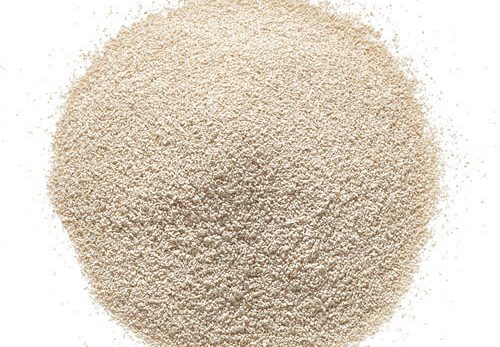Nitrogen gas is widely used in various industries due to its stability. To obtain high-purity nitrogen, specialized nitrogen generators are needed. There are two main types of nitrogen generators: PSA nitrogen generators and membrane nitrogen generators. This article will introduce PSA nitrogen generators and membrane nitrogen generators, as well as their differences.
Introduction
PSA Nitrogen Generator
PSA stands for Pressure Swing Adsorption. It is a technique used to separate and purify gases by changing the pressure to adsorb and desorb the gases. A PSA nitrogen generator is a device that uses PSA technology to separate and purify nitrogen gas.

Membrane Nitrogen Generator
A membrane nitrogen generator is a device that separates and purifies nitrogen gas using the different permeability of gasses through a semipermeable membrane.
Differences between PSA and Membrane Nitrogen Generators
Working Principle
PSA nitrogen generators use the adsorption principle. Membrane nitrogen generators use the permeation principle. A PSA nitrogen generator consists of two towers filled with CMS (Carbon Molecular Sieve). CMS adsorbs oxygen, diffusing more quickly, allowing nitrogen to pass through and be stored in the second adsorption tower. The membrane in a membrane nitrogen generator is a semipermeable membrane. It uses different rates of gas diffusion to collect and store nitrogen while filtering out and releasing all other gases in their gaseous forms.
Component
PSA nitrogen generators and membrane nitrogen generators share common components, including compressed air systems, control systems, and nitrogen purification systems.Because they operate on different principles, PSA nitrogen generators and membrane nitrogen generators will have some differences in their process modules.
The PSA nitrogen generator consists of adsorption towers, control valves, and desorption systems, while the membrane nitrogen generator consists of a membrane separation module.

Seize and Weight
PSA nitrogen generators are usually larger and heavier than membrane nitrogen generators.
PSA nitrogen generators have pressure vessels, CMS, valves, and other parts, making them take up a lot of space and be heavy. In contrast, membrane nitrogen generators have fewer moving parts, so they take up less space and are easier to move.
Purity Level
PSA nitrogen generators can typically achieve a nitrogen purity of 95% to 99.999%, while membrane nitrogen generators have a nitrogen purity of 95% to 99%.
Application
PSA nitrogen generators and membrane nitrogen generators are commonly used in food packaging and transport, the medical industry, and the chemical industry.However, PSA nitrogen generators are typically used for higher purity industrial production, while membrane nitrogen generators are suitable for areas requiring lower purity nitrogen and continuous supply.
Operational Cost-effectiveness
If you need to produce high-purity nitrogen, usually over 98% purity, then PSA nitrogen generators are more cost-effective.If you want to produce lower purity nitrogen, choosing membrane nitrogen generators is more suitable.When membrane nitrogen generators produce nitrogen with a purity of over 98%, it increases the equipment costs and lowers efficiency.
Impact of water
PSA nitrogen generators are usually more sensitive to water. The CMS in a PSA nitrogen generator can easily be affected by water, which reduces its lifespan.Membrane nitrogen generators have less contact with water, so the membranes usually aren’t affected, but too much water can still reduce their performance.To avoid the impact of moisture on both types of nitrogen generation systems, it’s important to ensure that the compressed air is dry.
Impact of Oil
If there is oil present in the PSA and membrane systems, the function of PSA nitrogen generators and membrane nitrogen generators will be permanently damaged, and the purity of the nitrogen gas will decrease.
Energy Consumption
The adsorption and desorption process of a PSA nitrogen generator requires a lot of compressed air, which means the compressor and other equipment need to continuously support operation, leading to a large amount of energy consumption.A membrane nitrogen generator doesn’t require a large amount of compressed air. It mainly relies on separating nitrogen from other gasses using a membrane.
Cost
Generally, PSA nitrogen generators are more expensive while membrane nitrogen generators are less expensive. Their prices vary a lot based on their model, production capacity, and brand. Typically, smaller to medium-sized PSA nitrogen generators cost between $10,000 to $30,000, and membrane nitrogen generators cost between $5,000 to $20,000.
Service Life
The membranes in a membrane nitrogen generator can wear out over time, which lowers their performance. After replacing the membranes, they can last for around a decade.When properly maintained and operated, PSA nitrogen generators do not experience changes in performance. High-quality PSA nitrogen generators typically have a lifespan of several decades.
Maintenance
Maintaining a PSA nitrogen generator is complex. It has several moving parts that require regular checking, such as pipes, valves, compressors, and adsorbents.A membrane nitrogen generator usually only needs the membrane to be cleaned, and the pressure regulator and control system to be maintained.
Conclusion
Here’s the comparison between PSA nitrogen generators and membrane nitrogen generators. If you want to learn more about nitrogen generators, please contact us. We look forward to communicating and collaborating with you. Thanks for reading!






 sales1:+1 213 276 6245
sales1:+1 213 276 6245 


